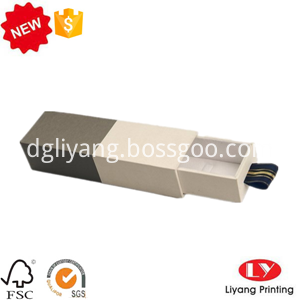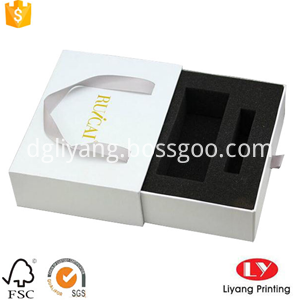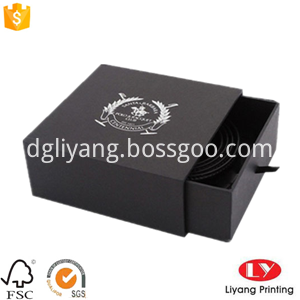In recent years, spot printing has been widely used in the printing of paper packaging products. The characteristics of spot color printing are: large-area solid color block with eye-catching colors, good shelf display effect; reduced color difference due to dot overprinting and dot deformation, stable color, easy to identify, etc. The following discusses the application of spot color inks and color control techniques with industry peers.
1. Spot color detection
At present, most domestic packaging and printing companies are relatively backward in the measurement and control of spot colors, and most of them rely on the experience of workers to prepare spot color inks. The disadvantage of this is that the ratio of spot color ink is not accurate enough, the time of preparation is long, and the influence of subjective factors is large. Some powerful large packaging and printing companies have adopted spot color ink matching systems to manage them.
The spot color ink matching system is composed of computer, color matching software, spectrophotometer, analytical balance, ink leveling instrument, and ink spreading instrument. The system uses the paper and ink parameters frequently used by the company into the database, and uses the color matching software to automatically match the color provided by the customer to the computer. Using a spectrophotometer to measure its CIE Lab value, density value, and â–³ E, which can be achieved Data management of spot color matching ink.
At present, the common spectrophotometers on the market include the American X-Rite and Swiss Gretag brands. Different spectrophotometers use different calculation methods when measuring color difference, which will bring different tolerances.
Color tolerance space areas described by color tolerance are divided into box tolerance (CIE Lab), fan tolerance (CIE LCH) and spherical tolerance (CMC 2: 1). The smaller the volume of the color difference space area described by the tolerance, the higher the accuracy of the color.
The color difference results calculated according to different tolerance methods are different from the human eye's evaluation of color. The accuracy of the box tolerance is 75%, the accuracy of the fan tolerance is 85%, and the accuracy of the spherical tolerance is 95%. It can be seen that different spectrophotometers use different tolerance methods, so the accuracy of color description is also different.
It can be seen that the box tolerance (CIE Lab) is used in the national standard, and its color description is 75% accurate. That is to say, in actual production, even if the ΔE value measured by the spectrophotometer is zero, the color still has a deviation of 25%. Since the human eye is more sensitive to blue, this difference is most apparent in blue. For those customers who have higher print requirements than national standards, this small deviation must be overcome. Therefore, when formulating spot color inks, the method of combining human eye observation with spectrophotometer measurement is generally used to solve this problem.
Various factors, such as paper performance, surface finish of printed products, desalting agent, desiccation density, and system differences, will affect the color control of spot color printing.
Second, the factors that affect the color difference of spot colors
In the printing process, there are many factors that cause the color difference of spot color ink production, and these factors are discussed separately below.
1. The effect of paper on color
The effect of paper on the color of the ink layer is mainly reflected in three aspects.
(1) Paper whiteness: Paper with different whiteness (or with a certain color) has a different effect on the color of the printing ink layer. For the same kind of whiteboard paper, the whiteness is different, and the color difference of the printing ink layer is mainly reflected in the amount of black ink in the spot color ink, especially for the color with a brightness above 70, the effect is particularly obvious, causing the spot color ink The ratio varies greatly. Therefore, in actual production, paper with the same whiteness should be selected for printing to reduce the influence of paper whiteness on the printing color.
(2) Absorbency: When the same ink is printed on paper with different absorbency under the same conditions, it will have different printing gloss. The structure of the paper determines that there are irregularities and pores formed by plant fibers on the surface of the paper. In order to obtain good uniformity and smoothness on the paper surface, coatings of different thicknesses are generally applied on the surface of the paper. The nature and thickness of the coating determine the ink absorption capacity of the paper surface. The different absorption capacity will inevitably make the color of the printing ink layer different. Compared with uncoated paper, the black ink layer will appear dull and dull, and the color ink layer will drift, the color performance of cyan ink and magenta ink is the most obvious.
(3) Glossiness and smoothness: The glossiness of the printed matter depends on the glossiness and smoothness of the paper. The surface of printing paper is a semi-gloss surface, especially coated paper.
On color prints, when light strikes the surface of the paper at an incident angle of 45 °, about 4% of the light is reflected off. This is the first-layer surface reflection. The remaining incident light passes through the ink layer, after being selectively absorbed by the ink, and then reflected through the ink layer, enters the human eye, and is perceived by the human eye. This is the color we observe. If the gloss and smoothness of the paper are high, the reflected light on the surface of the first layer is specularly reflected, which is not easy to enter the human eye. The color observed at this time is basically the color reflected through the ink layer. If the surface of the paper is rough and the gloss is low, the reflected light on the surface of the first layer will be diffusely reflected. At this time, the color we see is the mixed color produced by the main color light and the reflected light on the surface of the first layer. Because it contains white light components, the saturation of the main color light is reduced, so people feel that the color becomes lighter when observing the printed product, the density value decreases when the density meter is measured, and the brightness increases. [next]
2. The effect of surface treatment on color
The surface treatment methods of packaging products mainly include coating (glossy film, matt film), glazing (covering gloss oil, matt oil, UV gloss oil), etc. After these surface treatments, the printed matter will have different degrees of hue change and color density change. These changes are divided into physical changes and chemical changes. The physical change is mainly reflected in the increase of specular reflection and diffuse reflection on the surface of the product, which has a certain effect on the color density. When coated with gloss film, covered with gloss oil and UV oil, the color density increases; when covered with matte film, covered with gloss oil, the color density decreases. The chemical changes mainly come from a variety of organic solvents contained in the laminating adhesive, UV primer, and UV oil, which will change the color of the printing ink layer.
3. The effect of lightener on color
The desalting agent is a colorless and transparent substance in the form of ointment, which mainly plays the role of diluting the color in the spot color printing. The amount of desalting agent added is different, and the effect on the hue is also different, especially blue is the most obvious.
In the process of preparing spot color ink, the shearing force and pressure of the ink leveler and ink spreader on the ink are smaller than those on the printing press. There is no need to add a desalting agent during printing, but when adding a desalting agent to make a color card with ink, an even spot color ink display card can be played. In the case of the same color density, there is a color difference between the color card and the printed matter, this is because the addition of the lightening agent changes the distribution state of the pigment in the ink, so that the ink absorbs, refracts and reflects the light. Changes, resulting in color difference, this color difference is caused by the difference in the system.
4. The impact of the difference in dry back density
The ink just printed is still wet and has a density difference from the dry state. The phenomenon that the wet color density is greater than the dry color density is called the dry-out density phenomenon. This is because the ink layer just printed has a certain leveling, so the surface reflection is mainly specular reflection, which looks bright and shiny. When the ink layer is in a dry state, the surface reflection is mainly diffuse reflection, and the color is naturally dull and dull than when it was just printed.
Because the dry color density is generally measured after printing is dried for 30 to 60 minutes, this brings difficulties to the measurement and control of the spot color density.
A density meter with a polarizer device can eliminate the light generated by the specular reflection on the surface of the ink layer. The measured wet color density is very close to the dry color density, so that the measured density value is not affected by the dry and wet ink layer. For coated paper, the measured density difference is 0.05 to 0.15, and for uncoated paper, the measured density difference is 0.1 to 0.2. Different colors have different chromatic aberrations, yellow has the smallest difference, black has the largest difference, and blue and red are in between. Therefore, when measuring with such a densitometer, the measured value should be higher than the density value of the standard color sample, so that it can play a controlling role.
5. Impact of system differences
The process of making a color card with a leveling ink meter and an ink spreader is a "dry printing" process, without water participation, and printing is a "wet printing" process, and wetting liquid is involved in the printing process, so in the offset printing ink must inevitably occur The emulsification phenomenon of water encapsulation, because the emulsified ink changes the distribution state of the pigment particles in the ink layer, it will inevitably produce color difference, and the printed product will appear dull and not bright.
In addition, the stability of the ink used in the preparation of spot colors, the thickness of the ink layer, the accuracy of the weighing ink, the old and new differences in the ink supply area of ​​the printing press, the speed of the printing press, the amount of water applied during printing, etc. will also have different effects on the color difference. Impact.
Third, the control of spot colors
In summary, in order to ensure that the color difference between the same batch and different batches of products meets national standards and customer requirements, we have carried out such control on spot colors during the printing process.
1. Make a color card
First, according to the color standard sample provided by the customer, use the computer color matching system to give the spot color ink ratio; then call out the small sample of the ink, and use the ink leveler and the ink spreader to "show" the color samples of different densities; then according to the national standard (or (Customer) For the range of color difference requirements, use a spectrophotometer to determine the standard, shallow limit, and deep limit, and make a printed standard color card (color difference exceeding the standard needs to be further corrected). Half of the color card is a common color sample, and the other half is a color sample after surface treatment. This is for the convenience of quality inspection, as shown in the figure.
2. Verify spot colors
Considering that paper is the main factor that affects the color difference, so every time before printing, the actual printing paper must be used to "show" the color samples and make minor corrections against the color card to eliminate the effect of the paper.
3. Printing control
During printing, the collar machine uses the printing standard color card to control the thickness of the spot color ink layer, and assists in measuring the main density value and Bk value of the color with a densitometer to overcome the difference between the dry and wet color density of the ink.
In short, in packaging and printing, there are various reasons for the color difference of spot colors. It is necessary to specifically analyze and solve the problems for different reasons in actual production, try to control the deviation to the minimum range, and produce packaging prints that satisfy customers .
Liyang Paper Products Co., Ltd. was established in 1999,a professional enterprise integrated in R&D,Marketing and Manufacturing.Liyang Printing provide best solutions and service to various fields of industry.For example,we can make nice and luxury drawer boxes for products packaging.Such as jewelry Drawer Box,clothing drawer box,drawer box,etc.Our drawer boxes with high quality are exquisite packaging for your products.
We are committed to offering packaging solutions to help customers improve sales volume.
Any inquiries on our drawer boxes,welcome to contact us at any time.



Drawer Box
Drawer Box,Paper Drawer Box,Printed Drawer Box,White Drawer Box
Liyang Paper Products Co., Ltd. , https://www.liyangprinting.com